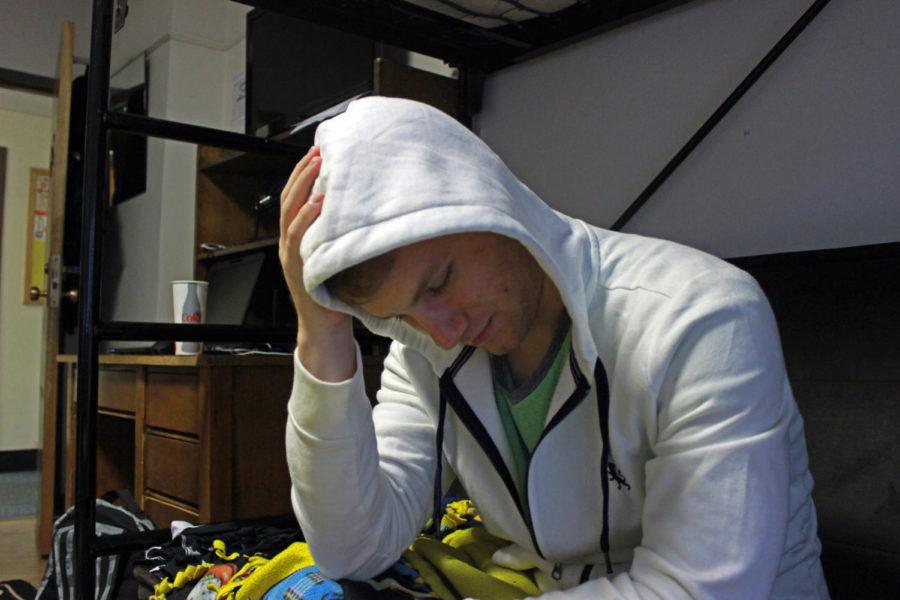Editorial: Raise awareness for invisible diseases
Kyle Schlichting/Iowa State Daily
Students, especially around the holidays and midterms, struggle with depression and don’t know where or when to go for help.
April 26, 2017
A wheelchair or a cane are quite plausibly the most recognizable symbols of disability. Yet, many diseases and disabilities are not easy to represent in a symbol. Invisible diseases impact individuals all across the country, including our campus, and it’s time we have a real conversation about it.
Mental illnesses, chronic pain and multiple sclerosis are just a few on a long list of invisible diseases or disabilities that can affect day-to-day activities without presenting physical signs that others can see. Nonetheless, these disabilities and diseases still may require accommodations, and should be well understood throughout college campuses so that these individuals can have just as much of a chance at succeeding in school as their colleagues without disabilities.
Accessibility for students with disabilities on college campus has not always been great, and in many ways still isn’t great. Just this year, a petition was started to move the Vocation Rehab Center, which provides rehab for individuals with disabilities, closer to campus to make it more accessible to students. With the center being off campus, it was even harder for students with disabilities to seek out these resources needed to aid them in their Iowa State experience.
In a recent essay in Inside Higher Ed, Valeria Piro discussed the difficulty of finding a college that could accommodate her wheelchair and physical therapy equipment. She also wrote that her accommodations may have been even harder to find if she had an invisible disability.
“What if my disability had more specialized requirements? What if my disability was invisible, or what if I was concerned about disclosing my disability? What would I have done, and how would I have decided on a college?” Piro wrote in the essay.
Additional reporting in Inside Higher Ed in 2014 found that some people are less likely to disclose their disabilities because faculty and staff members made it difficult to get accommodations.
Explaining disabilities, especially those that are invisible, can be a daunting task. It is not solely the responsibility of the individual with the disability to provide disclosure, but it is also the responsibility of faculty, staff and students — abled or not — to understand what accommodations that person might need to be successful, and to treat them with the respect they deserve. If this doesn’t happen, we deter others from seeking the services that can help them lead successful lives on campus and after graduation.
Part of respect comes in not making assumptions about people’s abilities. There are students on our campus who have invisible disabilities, and only some will be comfortable disclosing them. It is our job to treat all individuals with respect and to understand that we will never know all that affects our classmates or what happens in their lives when we don’t see them.
Making college campuses accessible to all students should not be an issue on the back burner. Allowing all members of our society to be a part of our education system to gain the tools to give back to our society should be a no-brainer. Yet, accommodations and even understanding of invisible disabilities has a long way to go. Let’s start changing that.
















